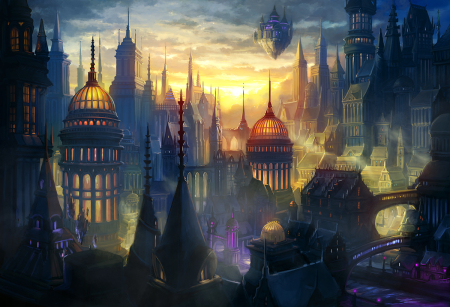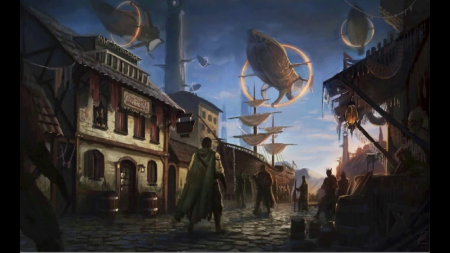Sharn
Sharn is the largest city in Khorvaire, with a population of half a million people. Humans make up about a third of that number, and dwarves are a sixth of it; the rest is a blend of every race found across Khorvaire. Halflings, elves, and gnomes all have a significant presence in the city, but even kalashtar and changelings have communities in Sharn. Beyond the permanent population, tens of thousands of people pass through Sharn every day. Refugees from the war still find their way to the city, along with tourists, spies, merchants, and folk hoping to find their fortune in the grandest city in Eberron.
Sharn stands above the Dagger River and its eastern tributary, the Hilt. It’s an important port for anyone dealing with Aerenal, Xen’drik, or Sarlona. Mountains line the shores of the Dagger, and Sharn can’t spread out. So instead it has grown ever upward.
The city is primarily made up of these quarters:
- Central Plateau
- Dura
- Menthis Plateau
- Northedge
- Tavick’s Landing
- Skyway
- The Cogs
- Cliffside
- Central Plateau has bridges that lead to Northedge and Menthis.
- Dura is connected to Tavick’s Landing and Menthis.
- Tavick’s Landing is connected to Dura, Menthis, and Northedge.
- Menthis is connected to Tavick’s Landing, Dura, and Central.
- Northedge is connected to Central and Tavick’s Landing.
Type
Large city
Included Locations
Remove these ads. Join the Worldbuilders Guild


















Comments